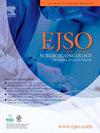Time to treatment initiation in primary extremity sarcomas: Determinants and oncological outcomes in a tertiary LMIC cancer center
IF 2.9
2区 医学
Q2 ONCOLOGY
引用次数: 0
Abstract
Background
or purpose: Time to treatment initiation (TTI) has emerged as a key quality control metric in oncology, with early treatment initiation translating to improved survival in certain malignancies. However, data is lacking for primary extremity sarcomas (PES). Hence, this study aimed to quantify TTI, identify factors influencing TTI, and evaluate its effect on oncological outcomes in PES.
Methods
This study was a retrospective analysis of patients with PES who received curative-intent treatment between 2011 and 2020. Various demographic details, tumor characteristics, treatment, healthcare variables, and oncological outcomes were analysed.
Results
Median TTI for primary bone sarcoma (PBS) was 24 days, and for primary soft tissue sarcoma (PSTS) was 35 days. Univariate analysis of PBS, age >20 years (p < 0.001), low-grade tumors (p = 0.011), chondrosarcoma as histology (p < 0.001), and surgery as the first treatment (p < 0.001) modality were associated with a delayed TTI. On multivariate analysis, only age (p < 0.001) and histology (p = 0.002) retained significance. In PSTS, age >20 years (p = 0.018) and non-affordability (p = 0.019) were significant in both univariate and multivariate analyses. Differences in TTI (early vs late) did not translate to changes in oncological outcomes, with similar overall survival rates at both 3-year and 5-year follow-up, for both PBS (p = 0.719) and PSTS (p = 0.786).
Conclusion
TTI is multifactorial. Though early treatment initiation did not impact survival rates, this study introduces a structured framework for auditing institutional workflows to identify bottlenecks and facilitate system-level improvements in the delivery of multidisciplinary sarcoma care.
原发性肢体肉瘤开始治疗的时间:三级LMIC癌症中心的决定因素和肿瘤预后
背景或目的:治疗开始时间(TTI)已成为肿瘤学中关键的质量控制指标,在某些恶性肿瘤中,早期治疗开始转化为提高生存率。然而,缺乏原发性肢体肉瘤(PES)的数据。因此,本研究旨在量化TTI,确定TTI的影响因素,并评估其对PES肿瘤预后的影响。方法本研究是对2011年至2020年间接受治疗的PES患者的回顾性分析。分析了各种人口统计学细节、肿瘤特征、治疗、保健变量和肿瘤结果。结果原发性骨肉瘤(PBS)的中位生存时间为24天,原发性软组织肉瘤(PSTS)的中位生存时间为35天。单因素分析PBS、年龄20岁(p < 0.001)、低级别肿瘤(p = 0.011)、软骨肉瘤作为组织学(p < 0.001)和手术作为第一种治疗方式与TTI延迟相关。在多变量分析中,只有年龄(p < 0.001)和组织学(p = 0.002)具有显著性。在PSTS中,年龄>;20岁(p = 0.018)和负担能力(p = 0.019)在单因素和多因素分析中都具有显著性。TTI(早期与晚期)的差异并未转化为肿瘤预后的变化,PBS (p = 0.719)和PSTS (p = 0.786)在3年和5年随访时的总生存率相似。结论tti是多因素的。虽然早期治疗并不影响生存率,但本研究引入了一个结构化框架,用于审计机构工作流程,以确定瓶颈,并促进多学科肉瘤治疗交付的系统级改进。
本文章由计算机程序翻译,如有差异,请以英文原文为准。
求助全文
约1分钟内获得全文
求助全文
来源期刊

Ejso
医学-外科
CiteScore
6.40
自引率
2.60%
发文量
1148
审稿时长
41 days
期刊介绍:
JSO - European Journal of Surgical Oncology ("the Journal of Cancer Surgery") is the Official Journal of the European Society of Surgical Oncology and BASO ~ the Association for Cancer Surgery.
The EJSO aims to advance surgical oncology research and practice through the publication of original research articles, review articles, editorials, debates and correspondence.
 求助内容:
求助内容: 应助结果提醒方式:
应助结果提醒方式:


